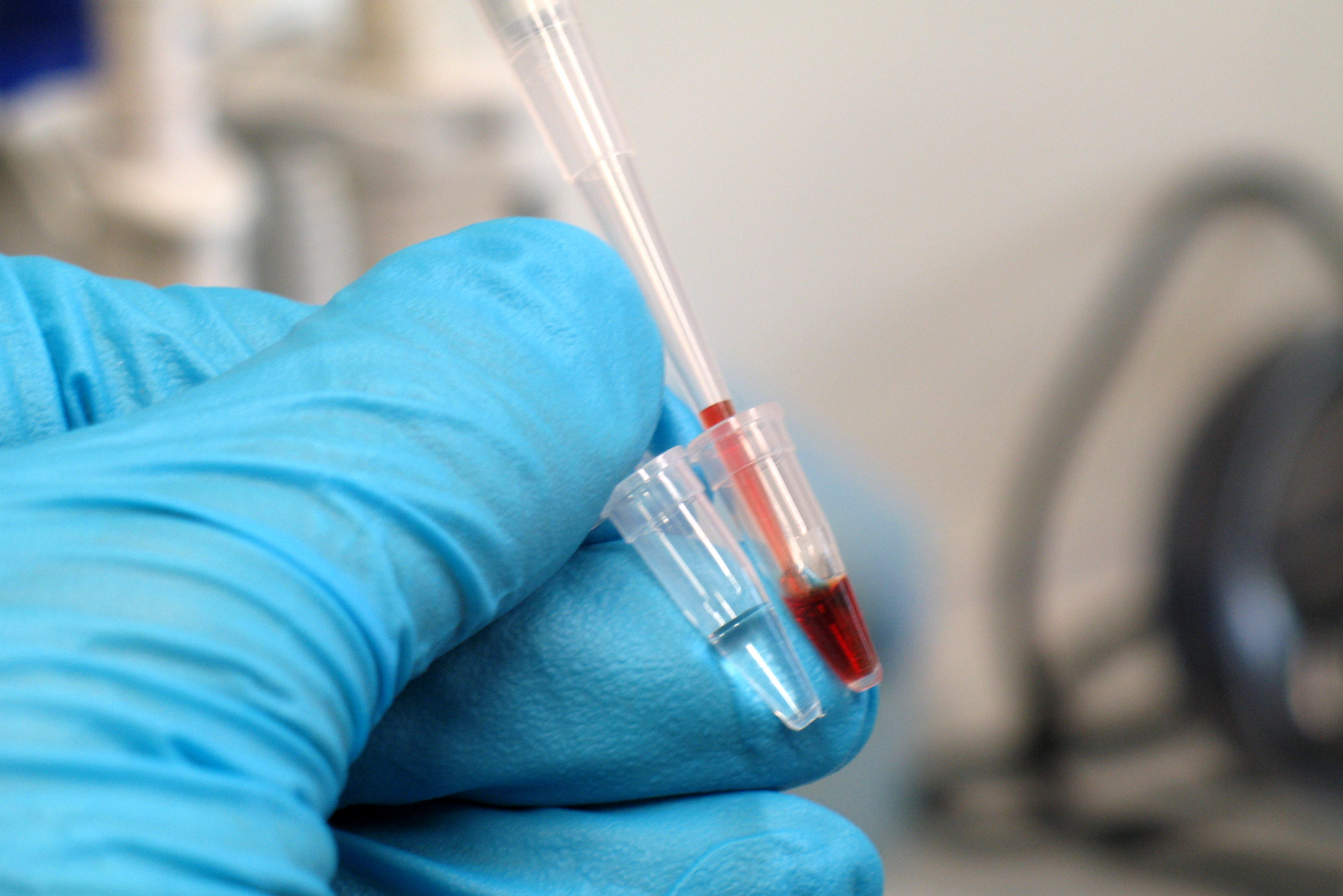
What horseradish peroxidase tells us about our genetic material
Konstanz chemists develop detection systems that make DNA or RNA detectable with the naked eye
A surprising discovery might pave the way for DNA or RNA detection with the naked eye: Konstanz chemists were able to demonstrate that in the DNA replication process DNA proteins can be bound to DNA nucleotides, even though the proteins are over 100 times larger than the nucleotides themselves. These large proteins, such as the horseradish peroxidase, can be used as markers to detect the presence of a certain gene sequence. A colour reaction makes the gene sequence in question detectable with the naked eye. This process might make it possible to develop test strips for on-site flash tests. For example, gene fragments that are tied to genetic diseases as well as viral pathogens can be detected. The team of the Konstanz chemists Moritz Welter and Andreas Marx, professor of organic chemistry and cellular chemistry at the University of Konstanz, have published this process in the online edition of the scientific journal "Angewandte Chemie".
The system the biochemists from Konstanz use is based on the endogenous copy process of our genetic material. So-called DNA polymerases, the copy machines in our genetic material, read the information from a single strand of DNA and build up the complementary strand, one nucleotide at a time. The chemists around Andreas Marx now succeeded in demonstrating that in this process also nucleotides can be incorporated that carry a significantly larger protein as "cargo". These proteins, such as the horseradish peroxidase, can be used as markers for the DNA segments.
The Konstanz chemists use this process to develop a precise but simple detections system for DNA segments. The sample to be tested is brought together with a nucleotide chain that is complementary to the DNA sequence in question. If the sample contains this sequence, it will bind to the nucleotide chain – even a single deviation in the sequence of DNA nucleotides will prevent this binding. In this binding process the DNA replication process can be used to add nucleotides with attached horseradish peroxidase as markers. The horseradish peroxidase dyes the DNA segment in question brownish and makes it thus detectable with the naked eye.
This test can be carried out at room temperature, does not need sophisticated laboratory equipment and is extremely robust. This is why the process might be the basis for the development of test strips for medical flash tests. These test strips could then be used to detect pathogens without complicated laboratory tests.
Original publication:
Welter M, Verga D, Marx A.
Sequence-Specific Incorporation of Enzyme-Nucleotide Chimera by DNA Polymerases.
Angew Chem Int Ed Engl. 2016 Jul 8. doi: 10.1002/anie.201604641
